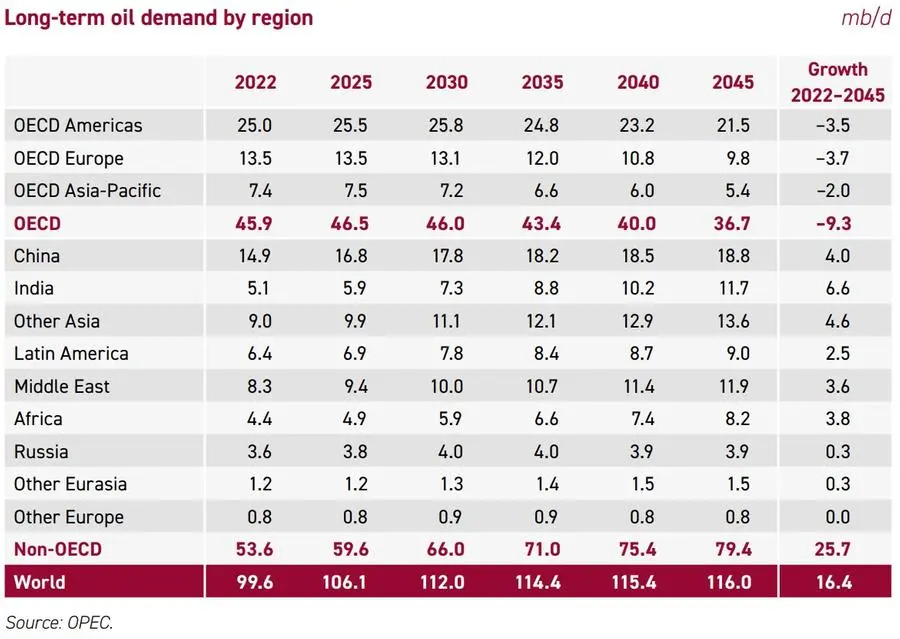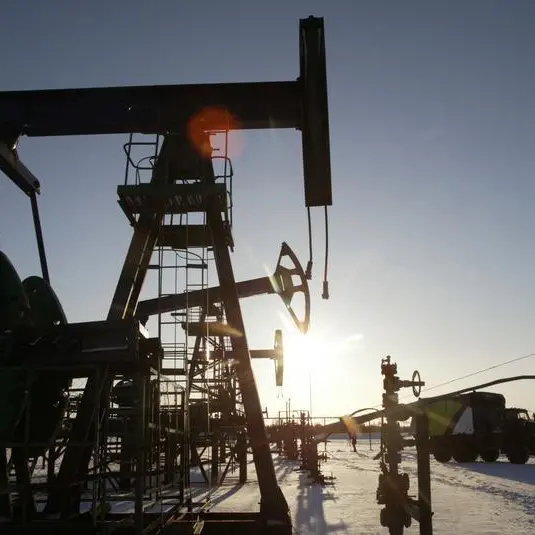PHOTO
Middle East oil demand is forecast to grow to 11.9 million barrels per day (bpd) in 2045, the Organisation of the Petroleum Exporting Countries (OPEC) said in its 2023 World Oil Outlook released on Monday.
The demand represents an increase of 3.6 million bpd compared to 2022. The oil consumption outlook in the region contrasts with that in OECD countries, which include those in Europe, Asia-Pacific and the Americas, where oil demand is forecast to fall by 9.3 million bpd over the same period.
The Middle East will also be among the major contributors to the growth in oil demand in non-OECD region, aside from Africa, which is forecast to consume an additional 3.8 million bpd by 2045, China (to increase by 4 million bpd) and other countries in Asia (4.6 million bpd). The largest contributions to the non-OECD oil demand growth are set to come from India, which will add 6.6 million bpd to oil demand over the forecast period.


The bulk of the increase in oil demand in the Middle East will likely come from two sectors, the road transportation and petrochemical, which are likely to add about 1.4 million bpd each to the regional demand.
Also, in 2023 alone, a large part of the demand growth is expected to come from developing Asia and the Middle East. “Combined together, these two regions account for 1.9 mb/d of incremental demand in 2023,” OPEC said.
Global demand
Between 2022 and 2045, the road transportation, petrochemical and aviation sectors will also account for the largest increase in global demand by 4.6 million bpd, 4.3 million bpd and 4.1 million bpd, respectively.
Jet/kerosene will see an additional demand of 4 million bpd, while ethane/liquefied petroleum gas, diesel/gasoil, naptha and gasoline will see increments of 3.6 million bpd, 3.1 million bpd, 2.5 million bpd and 2.5 million bpd, respectively.
Globally, oil demand is expected to reach 116 million bpd by 2045, rising from 99.6 million bpd in 2022. The oil producer group also said oil sector investments worth $14 trillion will be required to meet the long-term demand for oil.
Several countries in the Middle East, including the UAE and Saudi Arabia, have initiatives related to renewables, which OPEC said should help diversify energy supply and reduce the consumption of oil when it comes to generating electricity.
The 2023 OPEC World Oil Outlook was launched on Monday in Saudi Arabia. The 17th edition of the flagship report includes recent energy and economic-related developments, particularly related to the shifting dynamics around net zero policies.
(Reporting by Cleofe Maceda; editing by Seban Scaria)





















